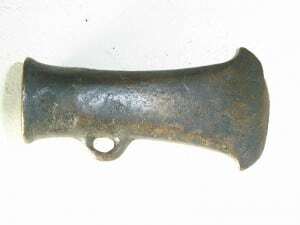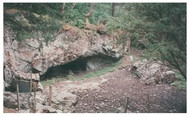An Introduction to Copper History In Ireland
Posted by The Celtic Croft on May 23rd 2016
An Introduction to Copper History In Ireland
Author: The Celtic Croft ; Published: May 2016
When it comes to the history of the world, there are key events that have advanced civilizations into new eras in every corner. Among the game-changing discoveries is when man came to know various metals and the uses they could provide. Like most things in the ancient past, the spread of knowledge from one culture to another was often slow, due in large part to travel constraints.
The Bronze Age of Europe began around 4000 BC when the knowledge of how to make this metal was brought to the continent. Bronze is an alloy, comprised of tin and copper, which can be molded into a wide variety of items. Less than two-thousand years later, French settlers traveled to Ireland, along with their bronze-making expertise.
Over time, the Neolithic Irish who were present on the large island began to mingle with descendants of the original settlers. The cultures began merging, giving rise to the Irish Bronze Age.

The oldest metal mining evidence found in the nation dates back to 2400 to 2000 BC. Located on Ross Island, county Kerry, the findings provided minimal data and are among the sparse findings from that era.
Whether the French settlers knew that Ireland had some fine copper deposits prior to relocation is not absolutely certain. However, it is possible that this was a driving force in their choice, given that the competition from the locals would be non-existent. In fact, the accessible copper deposits were often some distance from the resources of importance to the natives.
Western Munster is among the sites that became important due to the emerging interest in copper. Another location relevant to the study of copper history is Mount Gabriel, county Cork. The 25 mine shafts are one of the few remaining mining areas from the Bronze Age, with these dating between 1500 and 1200 BC.
 Bronze age ax. Source: www.forestryfocus.ie
Bronze age ax. Source: www.forestryfocus.ie
One of the most popular items constructed from the newly discovered bronze alloy was axes. Pure copper is more malleable than bronze, so the addition of tin created a superior weapon. Among the structural improvements, the edge stayed sharper longer, which was quite the game changer during battle.
As the Irish Bronze Age continued, technologies improved, and the types of items created with bronze expanded. While working with one-piece stone casts at first, they moved to two-piece molds in the middle of the age. In addition to swords, more complicated constructions, such as daggers, were possible.
Toward the end of the Irish Bronze Age, the knowledge of making clay casts around wax and fat designs was discovered. Once the clay was set, the wax was melted away, metal was poured into the mold and, once set, the clay chipped away.
In the centuries since, little copper mining has taken place in the country. There are some records indicating mining operations 200 to 300 AD, and the 1500's. Beginning in the late 1700's, copper mining began to boom, resulting in over 100 years of flowing metal. It eventually died down, and the copper mining industry in Ireland came to an end.
While the copper mining industry in Ireland has come to an end, artisans continue to find use for this beautiful material today. While some of the most popular are more decorative or collector-based in nature, copper continues to serve an important purpose and can today be found in Celtic coins, jewelry, cooking products and home décor items. The natural beauty and durability of this metal lends to it’s continued popularity, but many also respect the historical significance that copper held in Ireland and other Celtic nations.
Editor's Note About The Author
Our guest author of this article is Beatrice Quany, Marketing Director for ilovecopperjewelry.com. I (Joseph) ran across her website while I was searching for new copper jewelry to add to our product line. We had a conversation, and I was really impressed with her passion for the product, and her knowledge about the history behind it.
While not quite Celtic enough for our own product line, I love all of the unique copper jewelry pieces they have to offer, and I still wanted to share the products with you. I asked Beatrice if she would share some of the interesting history we discussed, and thus this article was born.
ilovecopperjewelry.com is a website devoted to the unique creations of award winning designer John S. Brana. His philosophy is, "Do what you love and explore what you are passionate about." Please have a look at his collection of beautiful copper jewelry!

